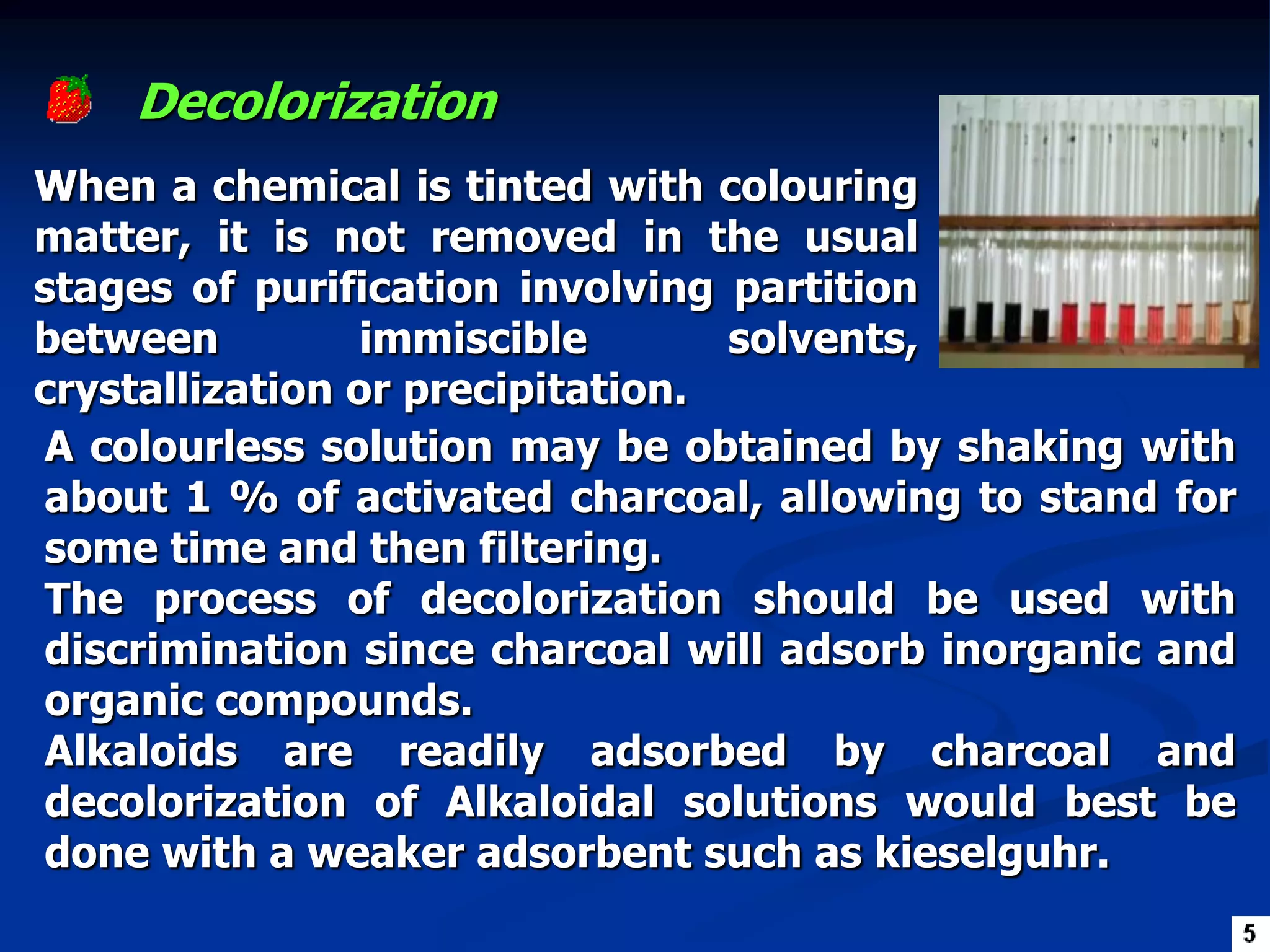Adsorption is the accumulation of substances on surfaces or interfaces, while absorption involves the accumulation and distribution of substances throughout a phase. Adsorption occurs when drugs attach to membranes, enzymes, or cell walls on surfaces, whereas absorption occurs when drugs permeate tissues, organs, or blood. The document then discusses various applications of adsorption such as gas removal, chromatography, and decolorization. It also examines factors that affect adsorption like temperature, pH, solute concentration, and surface area of the adsorbent. Finally, it outlines different types of adsorption isotherms and models including the Langmuir and Freundlich isotherms.













![ Define the following terms:
[solid, liquid, gas, adhesive force, cohesive force, interface, adsorption, Absorption, catalyst, dipole, physisorption,
Chemisorption, hydrophilic, hydrophobic, detergent, surfactant, surface tension, adsorbate, adsorbent, etc]
Respond to the following questions:
Illustrate the knowledge of adsorption process applications in pharmaceutical process
State and describe the types of adsorption in pharmaceutical procedures
What are surface and Inter-facial tension forces and respective association with adsorption process on the
surface material substance
Describe some key factors that have primary effect on the process of adsorption.
Illustrate the meaning of adsorption isotherm
changes of materials substance when exposed to some environmental conditions .
How is a chemical change different from a physical change at the surface of a material
What is contact angle of a substance and its significant role when two materials surface are adsorbed to each
other
Describe the role of contact angle during the adsorption process of a material substance
Group work discussional questions:
Give a detailed descriptive account of functional classification of adsorbate agents
Give a detailed descriptive account of structural classification of adsorbent agents
Explain the process of micelle formation in a given favourable environment](https://image.slidesharecdn.com/3-adsorption-180825210813/75/Adsorption-14-2048.jpg)










![ Define the following terms:
[solid, liquid, gas, adhesive force, cohesive force, interface, adsorption, catalyst, dipole, physisorption, Chemisorption,
hydrophilic, hydrophobic, detergent, surfactant, surface tension, adsorbate, adsorbent, etc]
Respond to the following questions:
Give a descriptive account of the phases of matter with logical relevance to state of medicines as they are
taken for their respective therapeutical values
What is viscosity and its relation with fluids
What are surface and Inter-facial tension forces and respective association with activities of a substance
material with surface area
Describe some key phase changes of materials substance when exposed to some environmental conditions .
How is a chemical change different from a physical change at the surface of a material
What is contact angle of a substance and its significant role when two materials surface are in contact
Describe the role of contact angle during the wetting process of a material substance
What is a detergent and justified reasons for its variable composition
Group work discussional questions:
Give a detailed descriptive account of functional classification of surface active agents
Give a detailed descriptive account of structural classification of surface active agents
Explain the process of desiccation and decolourization during the process of asorption](https://image.slidesharecdn.com/3-adsorption-180825210813/75/Adsorption-25-2048.jpg)